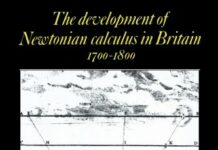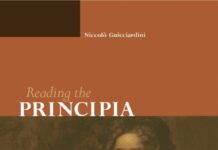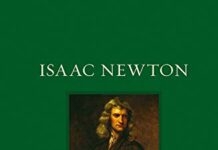
Ebook Info
- Published: 2011
- Number of pages: 448 pages
- Format: PDF
- File Size: 3.47 MB
- Authors: Niccolo Guicciardini
Description
An analysis of Newton’s mathematical work, from early discoveries to mature reflections, and a discussion of Newton’s views on the role and nature of mathematics.Historians of mathematics have devoted considerable attention to Isaac Newton’s work on algebra, series, fluxions, quadratures, and geometry. In Isaac Newton on Mathematical Certainty and Method, Niccolò Guicciardini examines a critical aspect of Newton’s work that has not been tightly connected to Newton’s actual practice: his philosophy of mathematics. Newton aimed to inject certainty into natural philosophy by deploying mathematical reasoning (titling his main work The Mathematical Principles of Natural Philosophy most probably to highlight a stark contrast to Descartes’s Principles of Philosophy). To that end he paid concerted attention to method, particularly in relation to the issue of certainty, participating in contemporary debates on the subject and elaborating his own answers. Guicciardini shows how Newton carefully positioned himself against two giants in the “common” and “new” analysis, Descartes and Leibniz. Although his work was in many ways disconnected from the traditions of Greek geometry, Newton portrayed himself as antiquity’s legitimate heir, thereby distancing himself from the moderns. Guicciardini reconstructs Newton’s own method by extracting it from his concrete practice and not solely by examining his broader statements about such matters. He examines the full range of Newton’s works, from his early treatises on series and fluxions to the late writings, which were produced in direct opposition to Leibniz. The complex interactions between Newton’s understanding of method and his mathematical work then reveal themselves through Guicciardini’s careful analysis of selected examples. Isaac Newton on Mathematical Certainty and Method uncovers what mathematics was for Newton, and what being a mathematician meant to him.
User’s Reviews
Reviews from Amazon users which were colected at the time this book was published on the website:
⭐Great book that helps you really understanding principia.
⭐This is a thoroughly researched work on Newton’s view of his mathematics and method in which he employed it. In my independent investigation (into Whiteside’s massive work “Mathematical Papers of Sir Isaac Newton”), I noticed that Newton seemed to work on the “new analysis” method early in his career but then seemed to discard it around mid 1670s for geometrical demonstration. He never looked back. His mature research papers and treatises such as De motu, and the Principia itself were composed in the style of the ancient, i.e. synthetic geometry of the Greek. There has been many confused speculations about this. Some says that it was his peculiar way in confusing the reader, or trying to be obscure – as he was extremely averse to censure and criticism. Others however believe that he used Euclidean construction so that the work can be accessed by the public who did not possess profound knowledge in Mathematics.Guicciardini explained that it was because Newton came to believe that the synthetic mathematics of the ancient, i.e. ruler-and-compass geometry, was a superior method to that of the modern “men of recent time.” Newton believed that the ancient had their own method of analysis which had been lost to history. Guicciardini argued that it was Newton’s concern about the certainty of mathematics as the language for describing nature that led to his quest to restore the ancient method. Anyway the idea of lost “method” was shared by Newton’s contemporaries as this was also the style of Huygens, whose work on evolutes Newton admired. In the end however it was never clear whether Newton did discover the lost method. But this thesis appears to explain the reason why Newton’s notations in calculus are not as successful as that of Leibniz. Newton never bothered to refine his analytical notations for the purpose of demonstration. He clearly believed that synthetic geometry was the way to go and he used it successfully in all of his investigative efforts. Through out his later career, Newton was concerned that he utilized algebraic notations heavily in his youth – which he strangely found to be lack of taste – and wanted to suppress those early works. I find this amusing but it sheds significant light in the mind of this great figure and I believe that Guicciardini’s book will encourage future historians, mathematicians, or just enthusiasts like me to learn to read Newton in his original (synthetic geometry) rather than replacing them with advanced notation of modern calculus and analysis which only makes sense to graduate students in math, engineering or physics.However, the conclusion of this work is rather off putting. The author believed that Newton’s geometrically demonstrative style was led by his arbitrary sense of aesthetics rather than for their effectiveness or even suitableness for advance science. Guicciardini may have a point, for I think that describing forces and motions with classical geometry is kind of difficult to do and to follow. But I don’t think Newton is a purist or an aesthete when it comes to scientific investigation. Isaac Newton was quite a practical man, an inventor. If he thinks synthetic geometry is a superior method, then we may have something to learn from him. For me efficiency and succinctness of modern mathematics has been the result of various inventions such as expanded number system and concepts. If Newton could describe the Order of the Cosmos without using complex numbers or Euler’s identity, then that’s a very remarkable achievement to me, for I understand little advance mathematics. Modern analysis may be a common language that combines geometry and arithmetic and algebra together as well as clarifies them, but it can also be too much on the abstract side and obscure the beauty of pure geometrical idea.Anyway this book stimulates my desire to tackle the hefty Principia one more time. I have a great fortune to find a book that provides a guide to readers who are interested in reading Newton’s later works – esp the Principia. If you are interested in Newton’s mathematics, you should not hesitate to check that out.
⭐This is a useful book with detailed contributions to many specific issues of Newtonian scholarship. Its conclusions, however, seem to me to be rather hasty at times. Consider for example Guicciardini’s characterisation of “Newton’s Interpretation” (p. 129) of his work on cubic curves:”The lesson that Newton learned from his projective classification of cubic curves is again at odds with Descartes’ defence of algebra as problematic analysis. First, contrary to what Descartes had stated, the curves defined by third-degree algebraic equations are far from simple: they show bewilderingly complex shapes.” (p. 129)No evidence whatsoever is offered to support the claim that Newton drew this conclusion from his work on cubics. Such a conclusion would be strange since what Descartes really claimed is that cubics are more complicated than conics and less complicated than higher-degree curves, and Newton’s projective classification certainly gives no reason to reject this order; on the contrary it fits Descartes’ scheme perfectly in that the projective classification of conics is trivial, that of cubics feasible, and that of higher-degree curves beyond reach. Furthermore, contrary to calling cubics “bewilderingly complex,” Newton, as one might expect, emphasised his complete understanding of them. Indeed, Guicciardini’s own chapter epigraph quotes Newton boasting that “it’s plain to me by ye fountain I draw it from” (p. 109).Ironically, while Guicciardini sanctions this fictional critique of Descartes, he dismisses Newton’s actual critique, which is much more sound. In effect, Newton points out that Descartes’ dictum that the simplicity of a curve is determined by the degree of its equation is absurd and that instead simplicity is determined by the means of describing and generating the curve. Guicciardini is insensitive in his evaluation of this stance:”The weakness of Newton’s position is that the concepts of simplicity of tracing or of elegance, to which he continually referred, are qualitative and subjective. No compelling reason is given in support of Newton’s evaluations of the simplicity of his preferred constructions; his criteria are largely aesthetic.” (p. 65; cf. also p. 74)Why should reliance on qualitative or subjective or aesthetic criteria necessarily constitute a “weakness”? The assumption that they do is nothing but sheer prejudice on the part of Guicciardini. Not a shred of evidence is offered that such concerns existed at the time.In his conclusion Guicciardini goes even further, claiming that Newton “relied on aesthetic criteria of exactness and simplicity that were arbitrary and unjustified” (p. 386). Now it is one thing to criticise the appeal to aesthetics in mathematics—however biased and anachronistic such as critique may be—but to claim that Newton’s aesthetic criteria were “arbitrary”—that, I’m afraid, is not only biased and anachronistic but plainly false.Guicciardini’s prejudiced conclusions are at odds with the laudable goal stated on the first page of the preface:”The basic questions that motivate this book are What was mathematics for Newton? and What did being a mathematician mean to him?” (p. xiii)I say: As long as we keep dismissing Newton’s aesthetic conception of mathematics as “arbitrary and unjustified” we will never be able to answer these questions truthfully.
Keywords
Free Download Isaac Newton on Mathematical Certainty and Method (Transformations: Studies in the History of Science and Technology) in PDF format
Isaac Newton on Mathematical Certainty and Method (Transformations: Studies in the History of Science and Technology) PDF Free Download
Download Isaac Newton on Mathematical Certainty and Method (Transformations: Studies in the History of Science and Technology) 2011 PDF Free
Isaac Newton on Mathematical Certainty and Method (Transformations: Studies in the History of Science and Technology) 2011 PDF Free Download
Download Isaac Newton on Mathematical Certainty and Method (Transformations: Studies in the History of Science and Technology) PDF
Free Download Ebook Isaac Newton on Mathematical Certainty and Method (Transformations: Studies in the History of Science and Technology)


